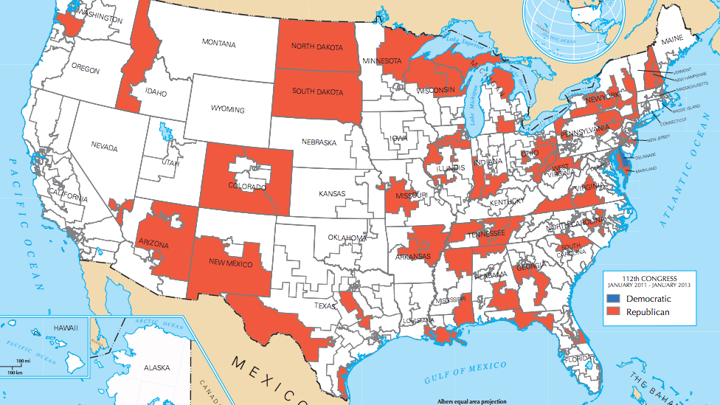
MATH IN THE CITY TALKS FALL 2019
All Math majors are invited to attend the end of the semester presentations for the MATH 435: Math in the City course. This semester and during the upcoming Spring 2020 semester, the MATH 435 course will be focusing on the Mathematical Analysis of Electoral Districts and Gerrymandering. The presentations will be on Friday, December 6 from 2:30 pm to 4:30 pm in 204 Oldfather Hall.
Introduction: Partisan manipulation of voting districts, known as gerrymandering, is a topic of enormous recent interest. For instance, in the past year the U.S. has seen several major court decisions about this. Many state and federal courts have been unwilling to rule on gerrymandering cases because they believe there is no reliable metric for whether or not a districting plan has been gerrymandered. In recent years a number of metrics have been proposed for this. In this class we have been studying four types of metrics, using them to determine if current districting plans are gerrymandered, and to study if districting plans can be designed to be less partisan.
Here is a break down of the presentation topics and times:
2:30-2:55: Geometric Metrics for Districting Plans
Nick Bouda, Bret Reetz, Judd Salem, Lane Weidner, Qichang Yang
The shape of voting districts can be an indicator of partisan bias in the drawing of district lines. We discuss several metrics for determining whether a districting plan has such bias.
3:00-3:25: Using Votes-Seats Curves to Study Election Bias
Tara Brockman, Fatima Barragan Herrera, August McClenahan, Tianyu Shen, Wei Young Tian
The relationship between how many votes a party gets and how many seats it wins is a good indicator of whether an election will be perceived as fair. We discuss curves which describe this relationship.
3:30-3:55: The Efficiency Gap and Related Metrics
Jean Claude Bamute Kamba, Shuhoa Mu, Hannah Oh, Taylor Price, Thu Vu
In any election, votes are “wasted”. If one party has significantly more wasted votes than the other, this might be a sign of gerrymandering. We discuss metrics which measure unfair biases in wasted votes.
4:00-4:30: Markov Chain Monte Carlo Methods for Detecting Gerrymandering
Masen Bachleda, Roderick Riley, Nicholas Verdoni, Geigh Zollicoffer
In order to determine whether a districting plan is gerrymandered, we could compare it to all possible districting plans. However, there are way too many possible districting plans to do this is practice, so we would like to find a representative sample of all districting plans. This is what the Markov Chain Monte Carlo method does. We will describe how this is done, via a computer program for a simple election.
For more information about these presentations and about the MATH 435 course, please contact Dr. Richard Rebarber.